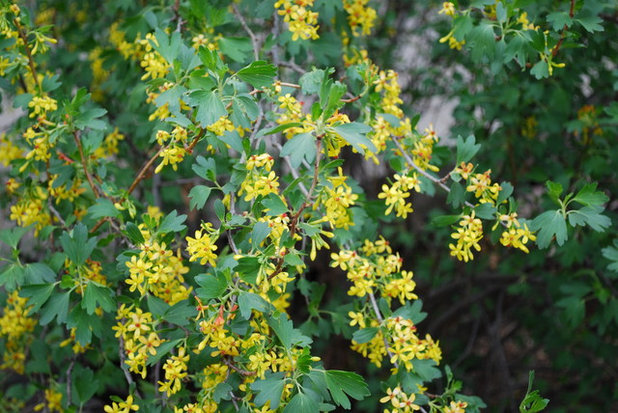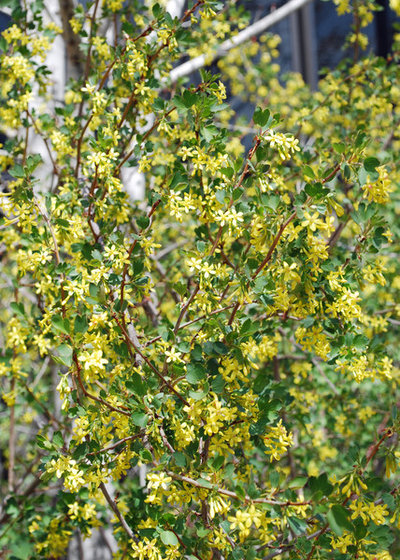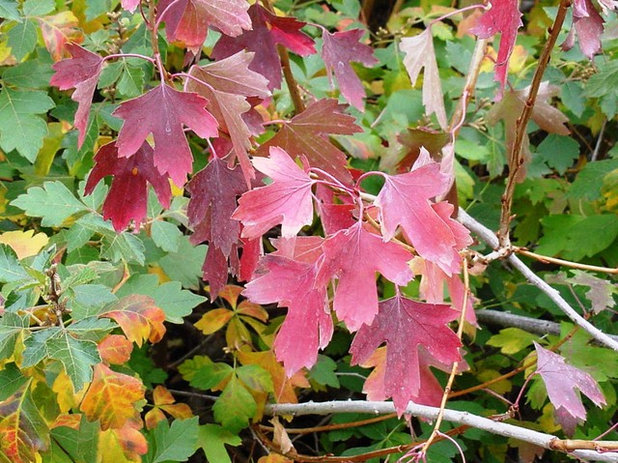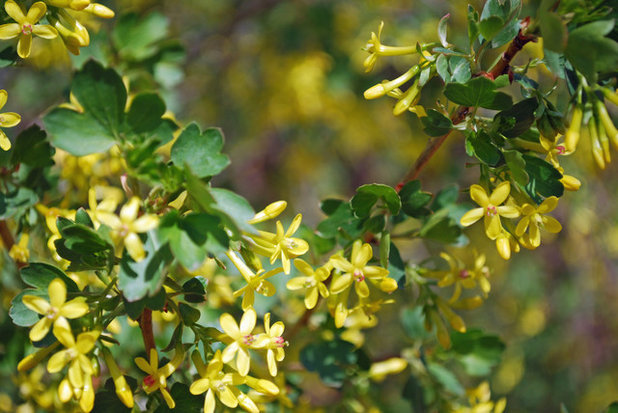Found naturally across much of the United States and Canada, golden currant
(Ribes aureum) occurs in many diverse habitats: prairies, stream banks edges, foothills, ponderosa pine forests and shrublands of sagebrush.
Historically, several Native American tribes combined the dried fruits of golden currant with dried buffalo meat to create a rich, portable foodstuff called pemmican — whereby another common name for the shrub, buffalo currant, was derived. Its fresh fruit can be used to make tasty jelly, jam, pie or even ice cream. In winter the persistent fruit and dense structure of this woody shrub provide an attractive habitat for wildlife.

Jocelyn H. Chilvers
Botanical name: Ribes aureumCommon names: Golden currant; flowering, fragrant or buffalo currant
Origin: Native to the western and central United States and Canada
USDA hardiness zones: 2 to 7 (find your zone)
Elevation range: Up to 10,000 feet

Jocelyn H. Chilvers
Water requirement: Low
Light requirement: Full sun to partial shade
Mature size: 4 to 6 feet tall and wide
Benefits and tolerances: Edible flowers and fruits; adapts to a wide range of soils; attracts birds;
moderately
deer and fire resistant
When to plant: Spring or fall
Seasonal interest: Spring and fall

Jocelyn H. Chilvers
Distinguishing traits. Bright yellow flowers in April and May have a pleasant, spicy scent. The flowers are followed in midsummer by persistent, marble-size fruit that ripens from yellow to red, or more often to purplish black.
Thornless branches sport bright green leaves that are mostly three-lobed. The fall foliage color ranges from bright red to rich mahogany, holding for a long period throughout the season.
How to use it. Golden currant makes a great specimen when planted where the flowers' fragrance and the fall color can be enjoyed. It's also effective in a mass planting as a hedge or screen, thanks to its dense foliage and branch structure. Golden currant features an upright, rounded form with medium texture.
Combine it with yuccas, low-growing junipers like
Juniperus horizontalis 'Taylors Blue' or 'Blue Star', and Spanish Gold broom (
Cytisus purgan 'Spanish Gold'). Native grasses and fine-textured perennials such as columbine (
Aquilegia spp) and prairie coneflower (
Ratibida columnifera) also make nice companion plants for golden currant.

Jocelyn H. Chilvers
Planting notes. Plant golden currant in full sun, partial shade or filtered shade. It's adaptable to most soils except heavy, wet clay.





